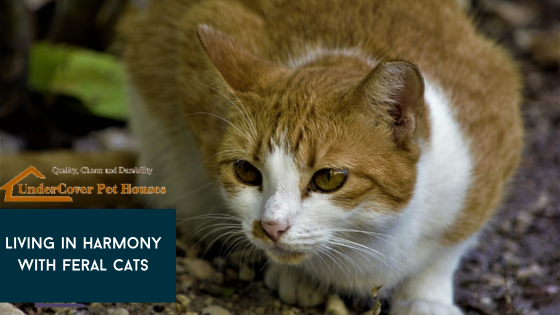 Loading... Please wait...
Loading... Please wait...How to Live Harmoniously with Feral Cats (A Guide for Communities)
Posted by Danny MacDonald on 2023 Nov 17th

Feral cats live outdoors independently and play a major role in our neighborhoods. For example, they contribute to pest control by keeping rodent populations in check.
Usually, feral cats are cautious when it comes to human interaction. So, it’s easy for conflicts to occur between them and people. This provokes the need for solutions, allowing humans and feral cats to coexist peacefully.
This blog post will discover how communities can foster harmony with feral cats.
Feeding Stations
Establishing designated feeding stations for feral cats is one of the critical elements of coexisting harmoniously with them. By providing consistent food sources, communities can discourage feral cats from roaming and scavenging in unwelcome areas, reducing potential conflicts with residents.
If you plan to set up feeding stations, place them in discrete locations to minimize intrusion and disturbance and maintain a clean environment.
Outdoor Cat Houses
Providing outdoor cat houses is another compassionate and humane way to address the needs of feral cats while decreasing potential conflicts that can arise between them and humans in the community.
Outdoor cat shelters offer a safe, secure, and weather-resistant shelter for feral cats, helping them stay warm during winter months and cool in the heat. When choosing outdoor cat houses, opt for sturdy designs, easy-to-clean, and insulating features to ensure the cats' well-being.
Promoting Responsible Pet Ownership
You can also encourage responsible cat ownership within the community. Educate neighborhoods about the importance of spaying or neutering their pets to prevent unexpected litters that may increase the feral cat population.
Educate your community on Trap-Neuter-Return (TNR) programs, which involve trapping feral cats, spaying them, and returning them to their customary location. TNR controls the feral cat population and helps reduce territorial cat behavior and mating-related conflicts.
You can also advocate for proper pet identification, such as collars or microchips, to help reunite lost cats with their owners and distinguish them from feral cats.
Establishing Community Collaboration
Open communication and collaboration among community members is essential for successful feral cat management.
Forming a local cat welfare group or working with existing animal welfare organizations can help pool resources, share information, and implement effective strategies to care for feral cat populations.
Bottom Line
Living in harmony with feral cats requires a combination of proactive measures and community involvement.
By providing feral cats with food through cat feeding stations, water and shelter outdoor cat houses, establishing feeding stations, promoting responsible ownership, and fostering community collaboration, neighborhoods can create a balanced coexistence that benefits residents and feral cats.
These efforts enhance the well-being of community cats and contribute to a more compassionate and understanding community overall. Investing in outdoor cat houses is a practical and humane step towards creating a harmonious environment where humans and feral cats can thrive together.
